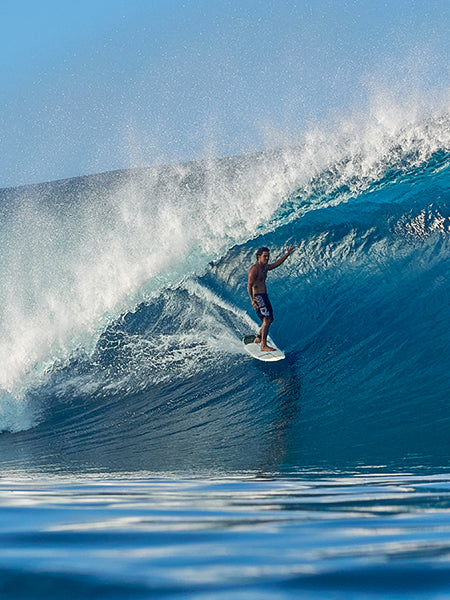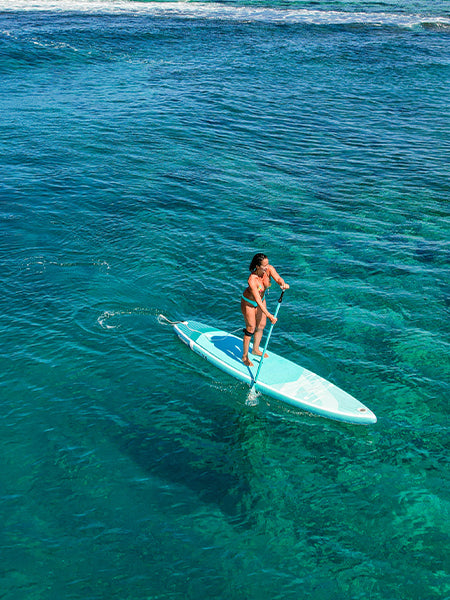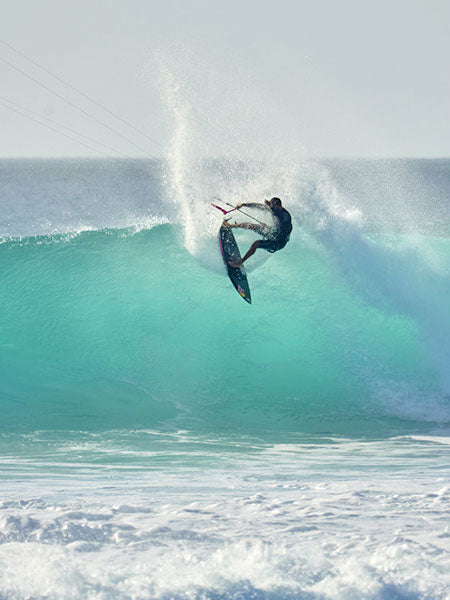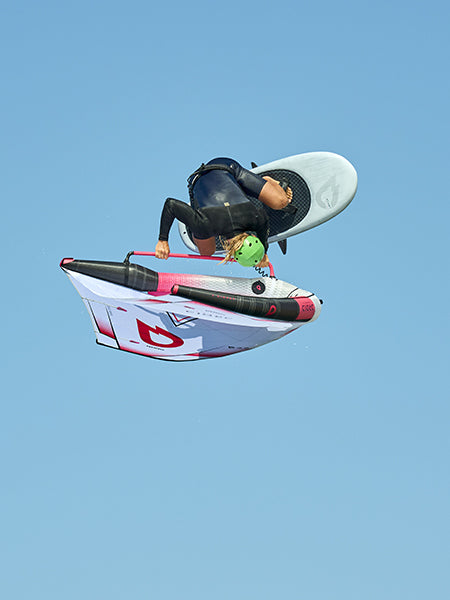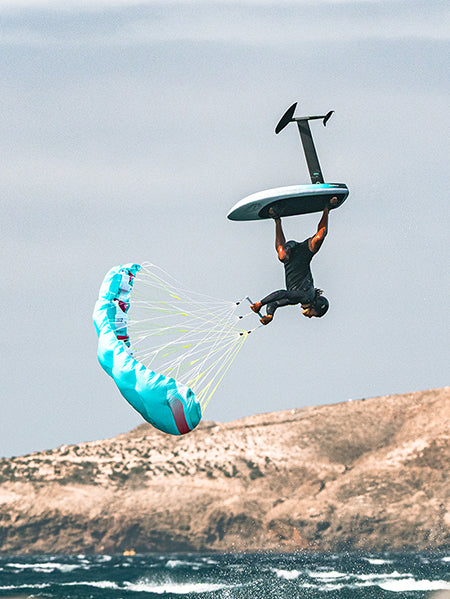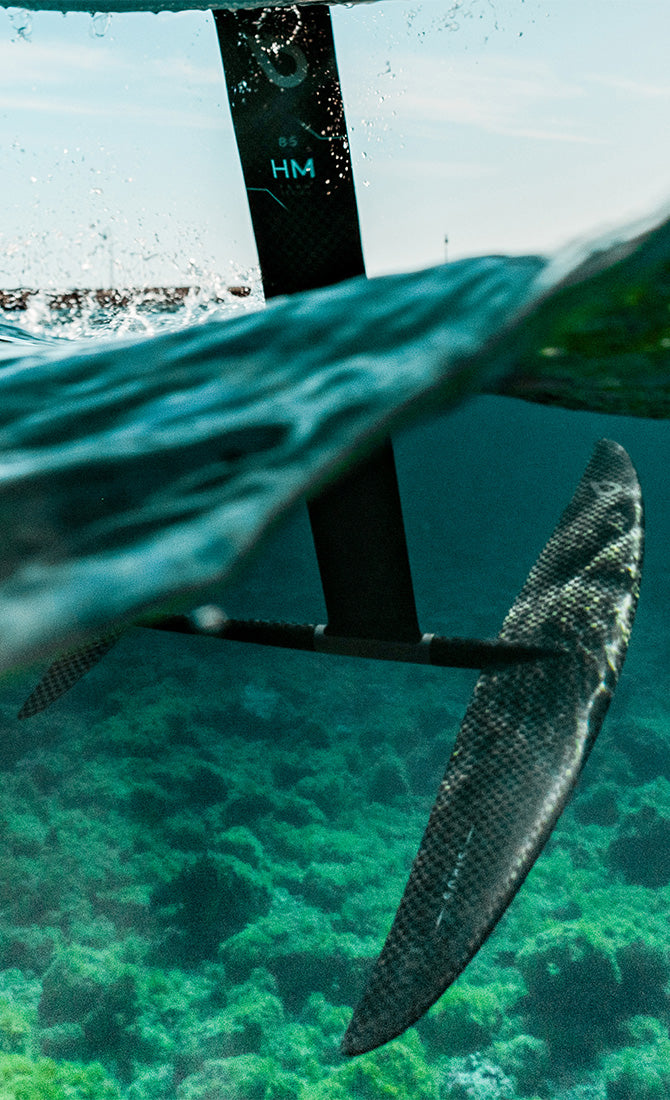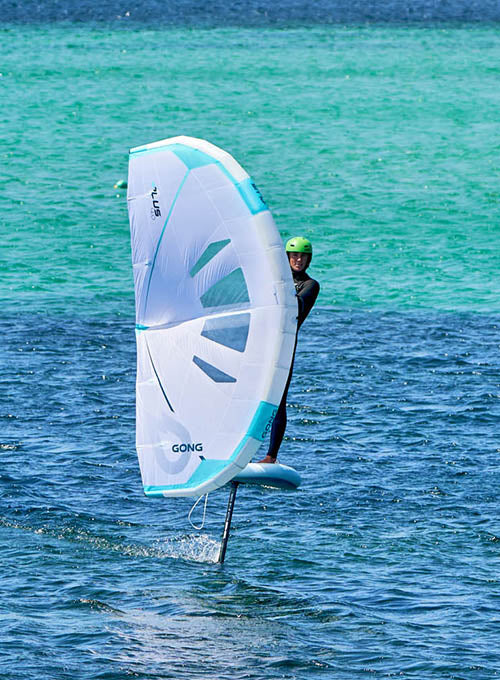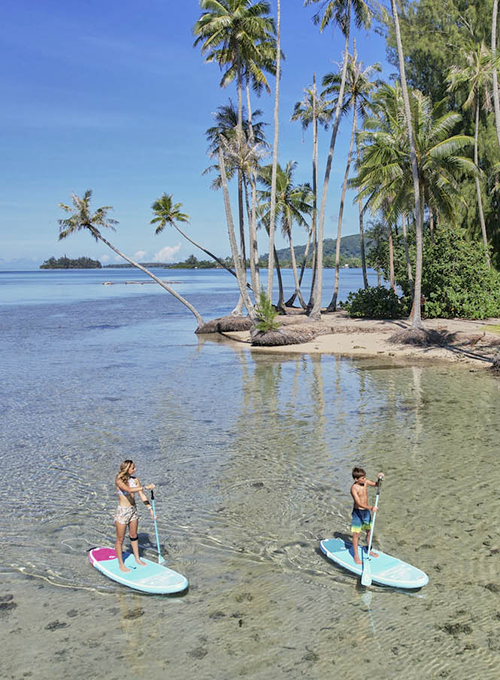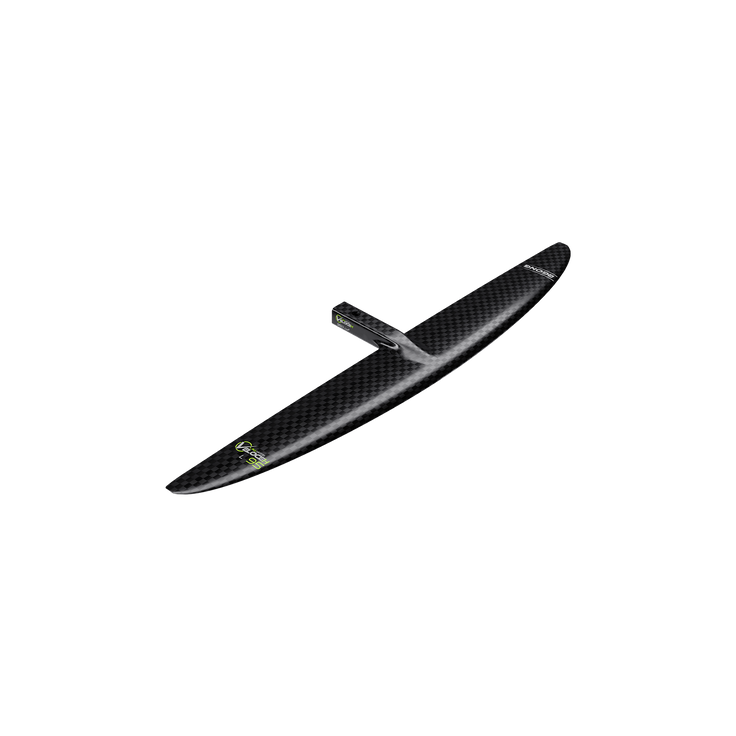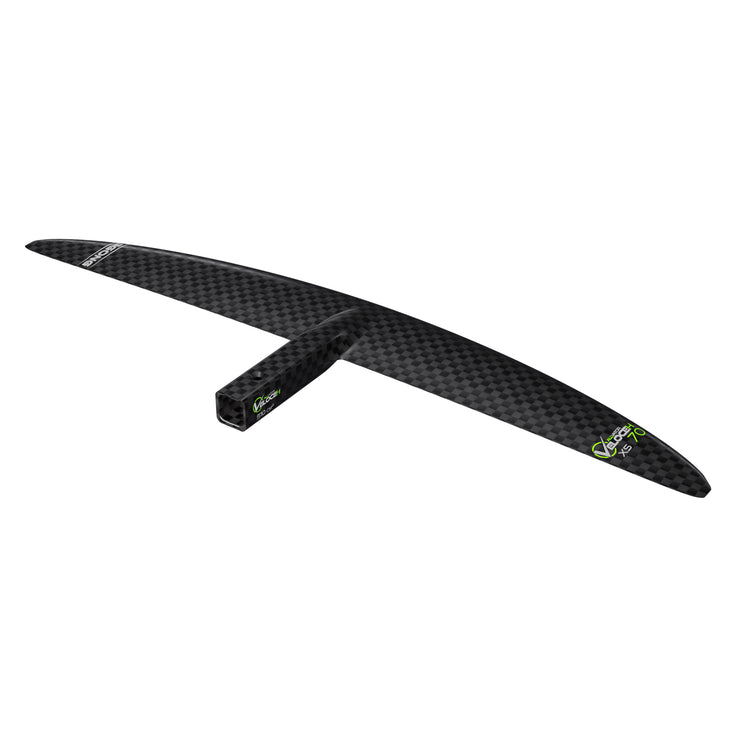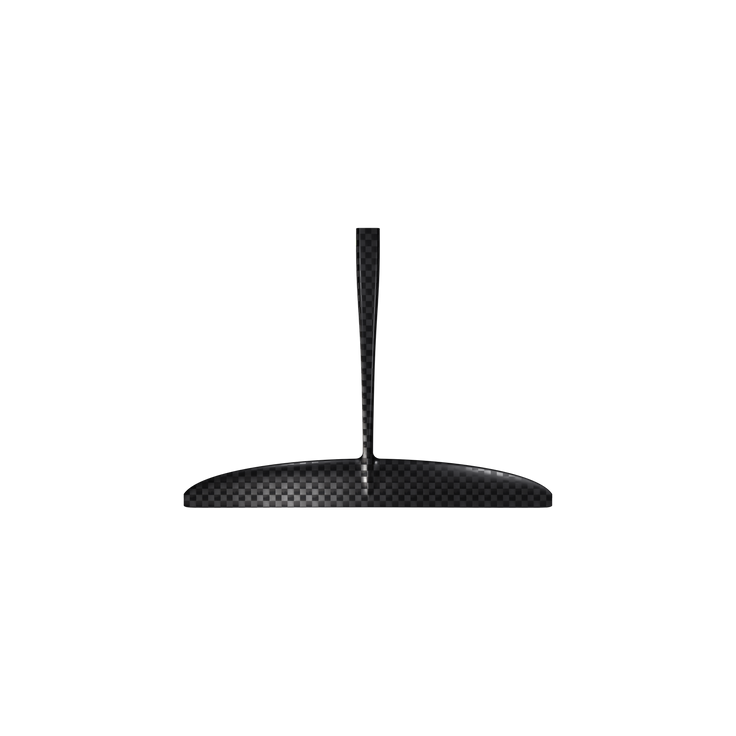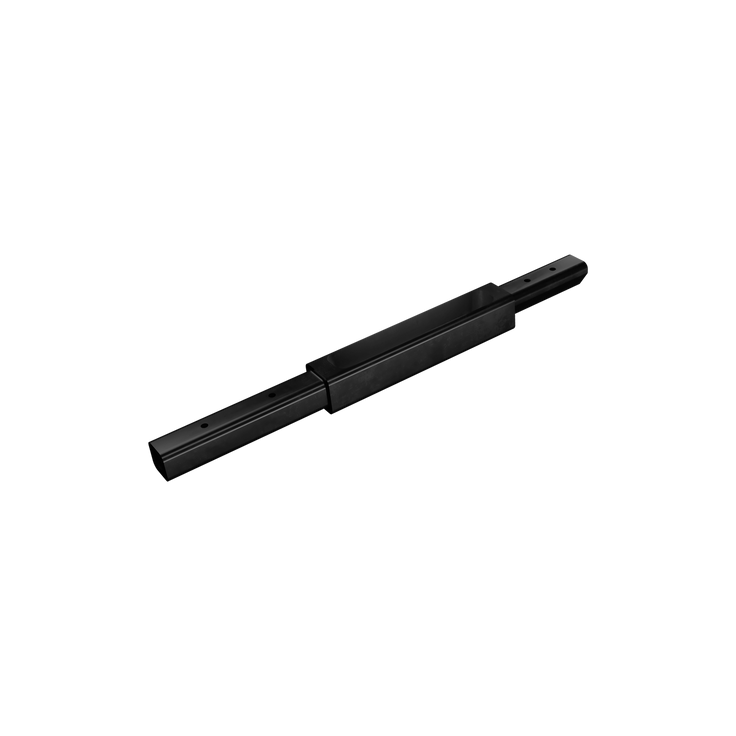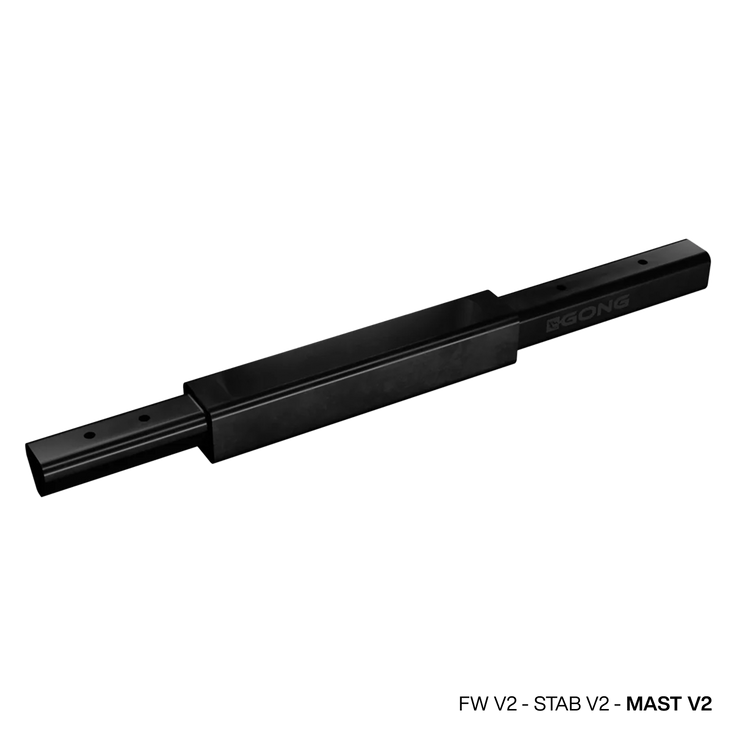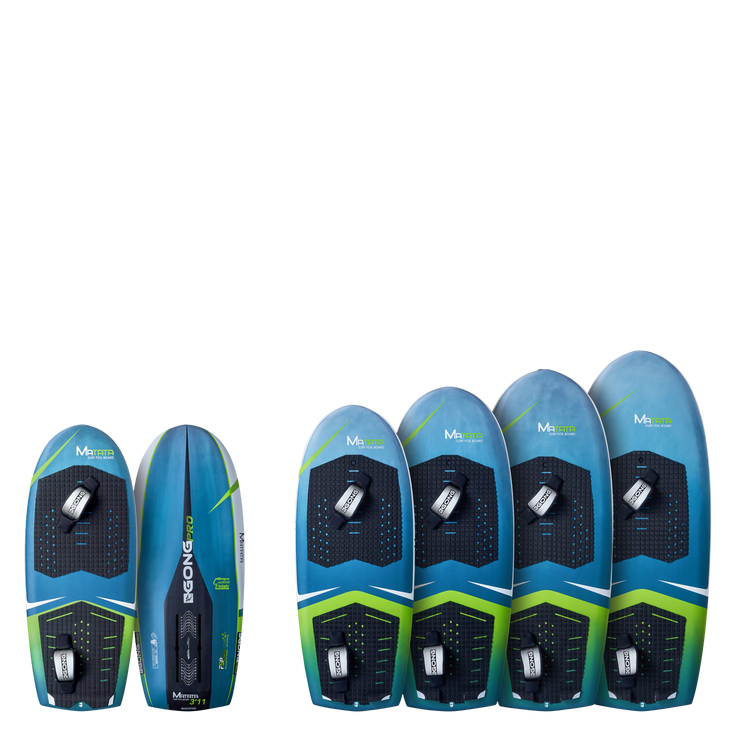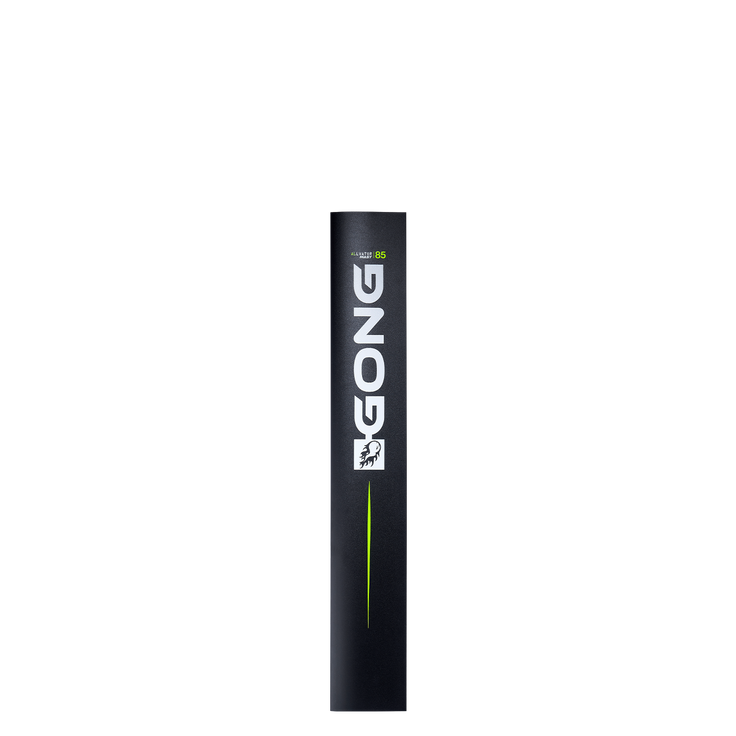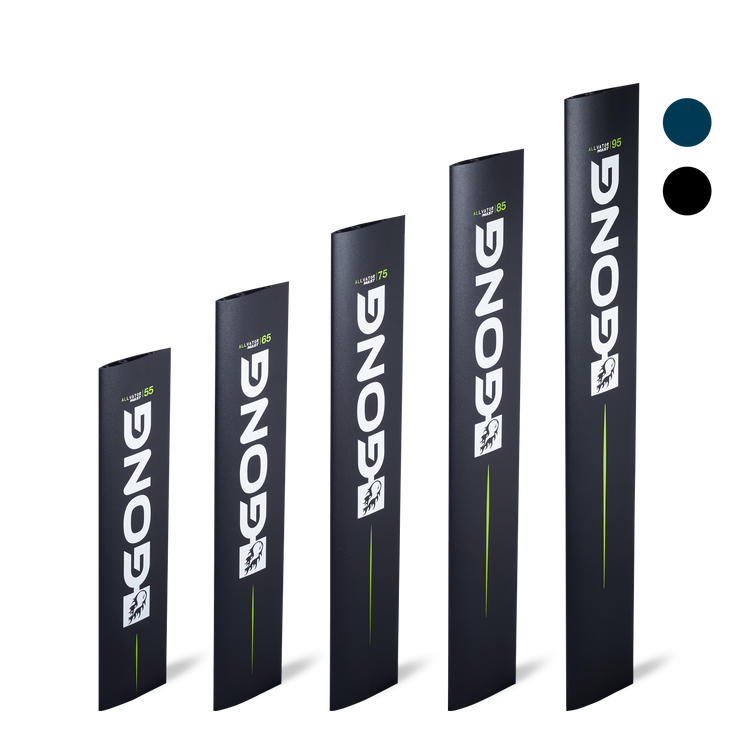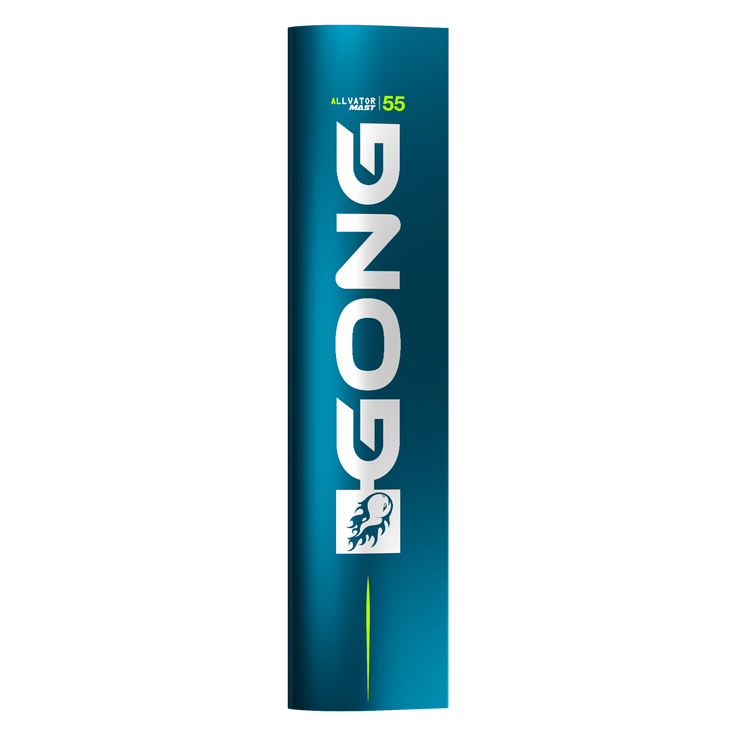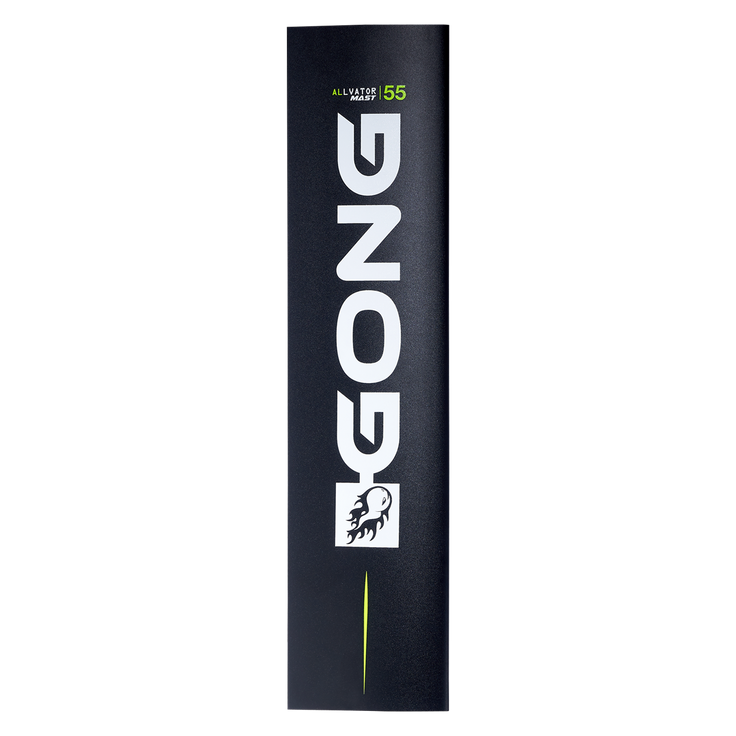FEEDBACK: FRONT WING VELOCE H
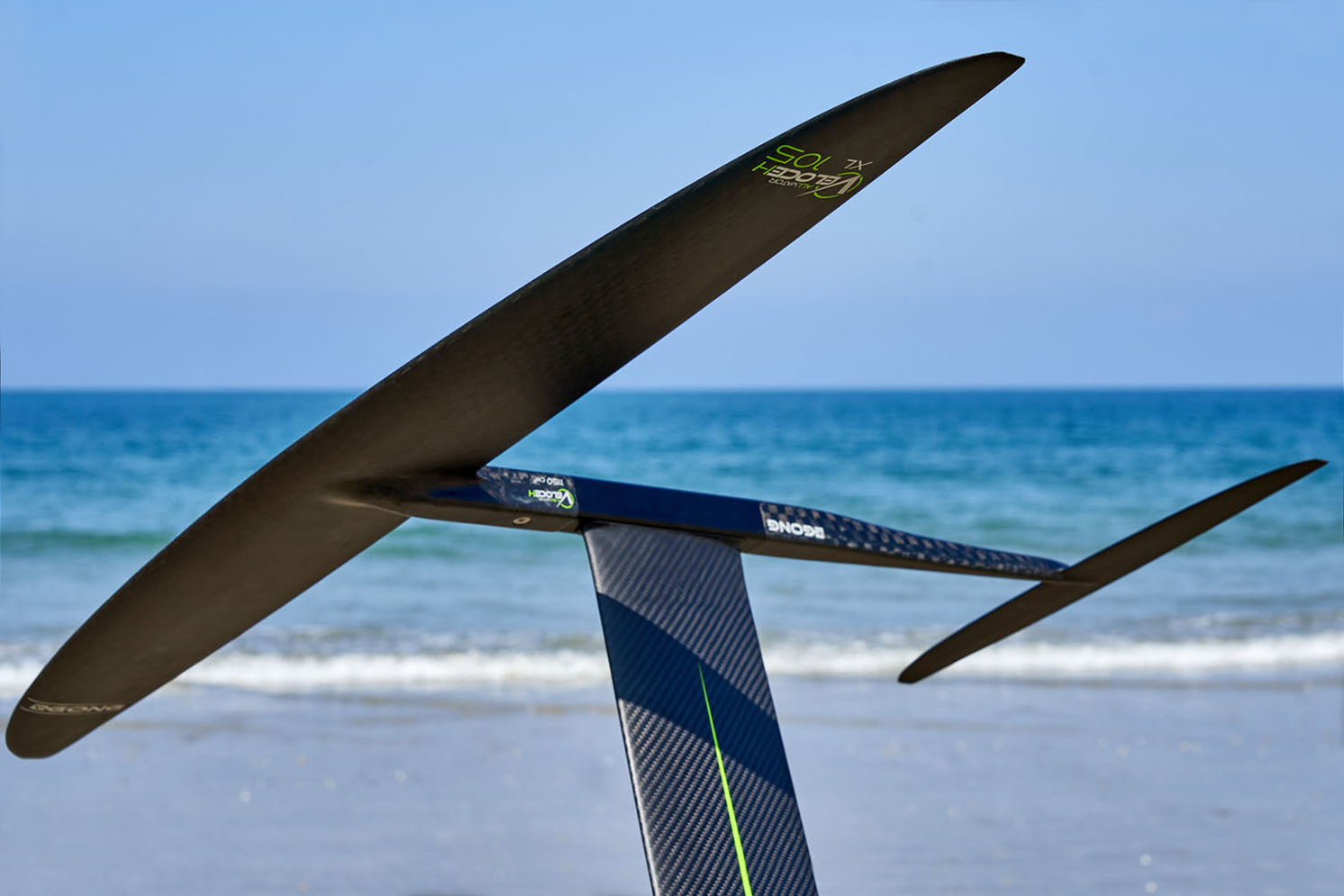
Quick feedback posted on our forum by Fred after trying out our new Veloce L-H and XL-H high aspect front wings during his last surf foiling sessions.
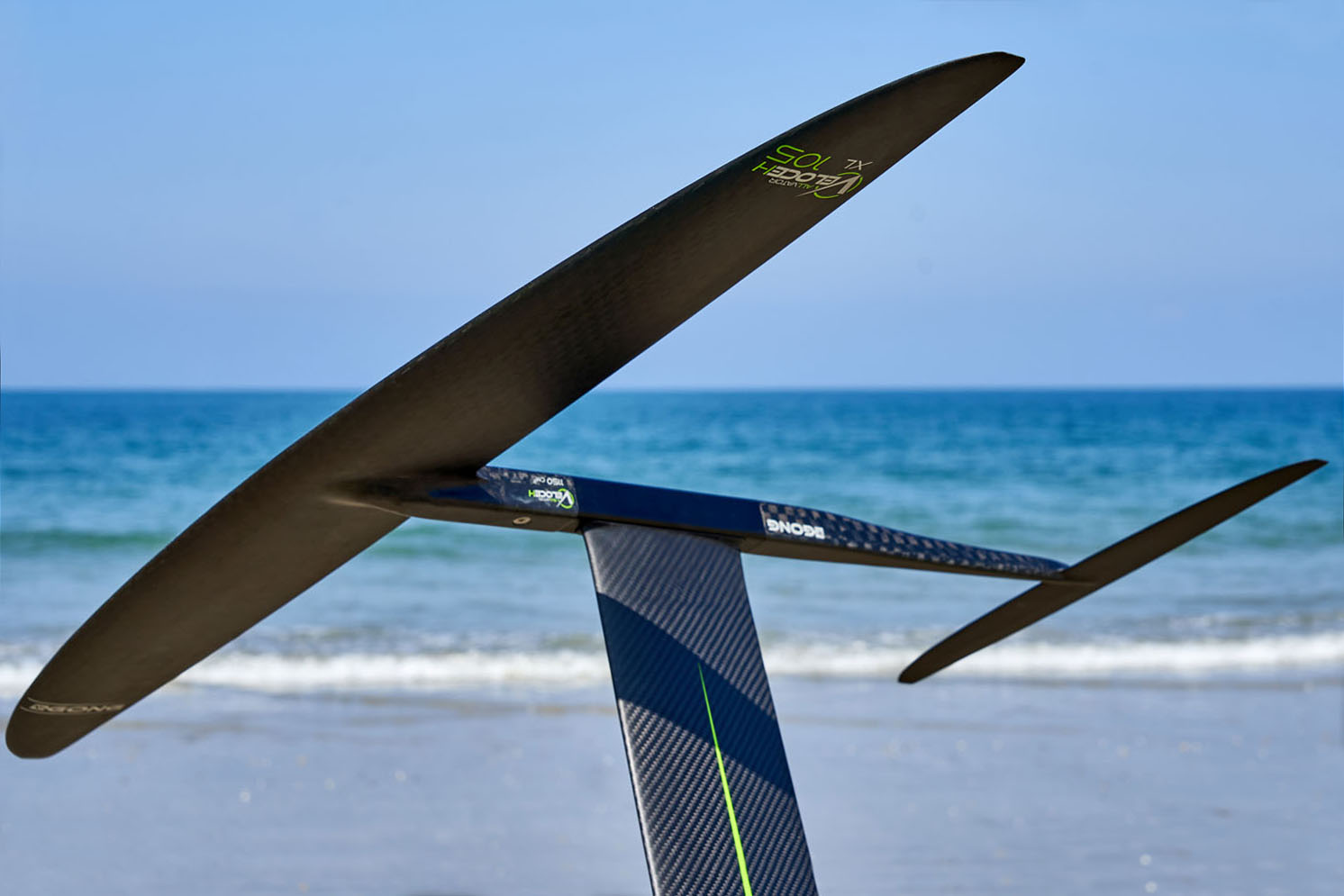
“I was using a Matata FSP Pro 4’8, a Fast 45 Stab and a aluminum 75cm V2 Mast (77kg)
Veloce L-H
First test with the Veloce L-H on a reef break, waist-high waves and more during some sets, so a fast take-off with a good amount of juice. The waves break for a few meters and then turn into a fairly powerful ondulation. The take-off is really easy with this front wing despite the immediate rush of speed. The lift is smooth and progressiv so you’re not overwhelmed by the front wing which remains very easy to control. Once I was going I was really surprised by the power of the front wing despite the fact that the wave shrunk and turned into an ondulation not even 50cm high. It feels like a 1200/1200 cm2 front wing when it is actually 950 cm2.
Exiting the wave is a formality, and the pumping works amazingly well but you definitely need a fair amount of speed when exiting the wave, and you need to keep it going. The span of the Veloce L-H means it lacks the maneuverability of a “regular” L size front wing, but the tips dive into and poke out of the water effortlessly so with some anticipation the foil turns perfectly.
Veloce XL-H
First session with the Veloce XL-H on a sand break in long 50 cm high waves. The waves break gently with very little slope, so not much speed. Thankfully the foil takes off easily and smoothly, same as the L-H, and I always felt in control even during late take-offs or when it got bigger. The span of the XL means you have to anticipate, but no more than you would with another front wing of similar span. At first my turn radius was bigger but after a few waves you inevitably get the hang of it and I could turn harder with the tips poking out without any negative impact, and it’s actually great fun to try to do it.
The most surprising thing about this Veloce XL-H is its low-end capabilities. After breaking, waves went over a basin which turned them into mere ondulations. Near the end, these ondulations were less than knee-high and getting smaller, and yet even at low speed, the front wing kept gliding on its own without needing to pump. That was clearly the most surprising thing, the fact that it was capable of that much glide at such low speeds. When it comes to pumping, the diminution of drag is what is most noticeable. Each pump you feel the whole glide of the front wing, that is, if you can keep it going.
General opinion
Despite smaller surface areas compared to the front wings we are more accustomed to, the sizing is perfectly in line with the other ranges and an L-H is still an L. Low end is great, and the maneuverability is what is expected given the span. Obviously the rail-to-rail is no match when compared to a Fluid-T of a similar size, but the thinner tips do allow for very hard turns nonetheless. When it comes to pumping, for those already using Fluid-T or Veloce front wings, the speed at which you need to exit the wave is similar but you do really need to keep them going to enjoy the full efficiency of the H front wings. Still, there is no magic when pumping is involved, someone who knows how to pump properly will get the full benefits of the high aspect wing, while someone else might not get much more out of it.
Thank you. “
